Published by Jeremy.
Disclaimers: We use demographic data, email opt-ins, display advertising, and affiliate links to operate this site. Please review our Terms and Conditions for more information. This website is intended for those of legal drinking age in your jurisdiction.
Out of the six modules of WSET Diploma, none is more daunting than the D3 exam featuring still wines of the world.
Part of this is because of volume- the module has a ~600-page book with dozens upon dozens of wine-growing regions, hundreds of grapes, and an untold number of facts and figures to remember. Part of this is also because the exam requires you to answer just five questions that could cover all material from a grand perspective all the way down to a technical question on a specific varietal in a unique PDO. But the other part is that the exam spans two days and includes a tasting component featuring 12 wines as well!
As such, this beast of an exam requires a ton of planning to tackle. After finishing this module, much like all other modules in the program, I have some thoughts on how to best prepare for the WSET Diploma D3 exam.
Note: I took the WSET Diploma D3 exam in May 2023 and passed. Test material and structure can and does change over time.
A Few Upfront Notes to Get Started
D3 is an exceptional module in the WSET Diploma program, possibly more extensive than the other five modules combined, and as such, I need to make a few notes up front.
First off, this post is long. I can't get around it here- there is far too much to discuss for this monster module. A ~600-page book deserves no less.
Second, this post covers studying ideas for theory, limited discussion on tasting (we also published an extensive WSET Diploma wine-tasting article for that), and exam-day practices. While we touch on tasting logic and exam-day thoughts here, reading the more focused tasting article is advised.
Third, this article is best read well before your first D3 class and revisited over time. If you are reading this for the first time right before your D3 exam, I would be hesitant to read anything except for the exam-day tips section at the end. I do not want to cause anyone extra stress close to exam day by sharing study techniques you may have skipped. Trying to do something new at the last minute is always risky.
Finally, please remember that this is how I approached the module only. It is from my perspective and my perspective alone. It is not a summary of all techniques, and study habits vary considerably- especially in this module. This is simply what I did and what I would do again in the future.
So take a deep breath and let's get to work.
What to Expect in the WSET Diploma D3 Exam
The WSET Diploma D3 exam is the biggest one of the entire program and spans two days. One day is about theory, and the second is about tasting.
The good news is that, unlike other modules, you can pass these two exams separately. If you fail one, you do not have to resit for both- giving perhaps a bit of reprieve over the all-or-nothing WSET D4 exam and WSET D5 exam. The bad news is that this exam is brutal and, to make matters worse, you cannot offset a lower theory score with a higher tasting score- they are entirely separate.
The WSET Diploma D3 theory exam consists of two sessions on the same day, with the first session requiring you to answer three theory questions and the second section requiring you to answer two- all rated at 100 points each. Any individual question could be on one focused region or be a broader style question that weaves in several regions within a shared link (e.g. same grape). The topics could focus on grapes, law, climate, grape growing, winemaking, business, all of the above, and so much more. Everything is fair game which is quite daunting.
You are given a few bits of reprieve here worth noting.
First, students are given an extra question in each session and get to choose one (per session) not to answer. So in session one, you're given four questions and you pick three to answer, and in session two, you're given three questions and you pick two. So if there is one on Spain and you absolutely hate Spain, you can chuck it out. If there are two you hate in the same session, well, you have to pick which one you want to fumble through as best you can.
Second, the passing score in both exams (theory and tasting) is cumulative across all questions/flights. As with all other WSET exams, you need a 55% score to pass. With five questions in theory, at 100 points each (500 points total), you need a total of 275 points across all five essays to pass.
The good news is you do not need >55% on all five questions to pass D3 theory, only an average. In fact, I failed one question and hit merit on two and my average was enough to pass.
Would I abandon one question to go top-heavy in another I know all too well? No– the goal is >55% in every question to be safe. But would I start with the one I know the most, work my way down, and then spend the last few minutes padding points on one I know well over one I struggled with? I absolutely did and I believe this one paid off. Any extra point is an extra point towards passing, so buffering on ones you know well can go a long way.
So, what kind of questions could you expect in the theory portion? I analyzed previous exams since WSET changed the test format around early 2020 and found some common trends. Almost all of these appear in some capacity in most exams:
- One question focusing almost exclusively on France
- One question focusing almost exclusively on Italy
- A question featuring at least one more Old World Country (sometimes up to 2-3 referenced)
- A question featuring at least one New World Country (sometimes up to 2-3 referenced)
- A question focusing on a specific grape varietal(s)
- A question focusing on named PDOs without a specified country/grapes listed (e.g. Muscadet Sevre et Maine, Burgundy, Sancerre, etc.)
- A question focusing on a business/law/marketing element
- A question focusing on a less well-known wine region to students (Jura, China, etc).
- A question focusing on non-traditional winemaking methods (Rose, Botrytis, Late Harvest, Ice Wine, etc.)
If you count the above bullet points, you'll note that it is more than the seven questions you will get. This is because some of these topics can overlap in a single question.
A question focusing on France may only list named PDOs in the same region. You may have a business-oriented question focusing on Italy. Rose winemaking may be lumped into a regional or grape question as something you need to remember is an option without being overtly stated. I could go on. The takeaway here should be that these broad elements typically appear in some capacity and gave me some structure on how to think about all the material- the prominence and points breakout for each may vary.
Will your exam follow this format? I cannot say this with 100% certainty, as my sampling of modern exams (2020 onward) was inherently limited. WSET can ask whatever they want. Whether trends continue remains to be seen; however, logically, this does make a lot of sense as it is a fair split of most of the content in the book.
Out of all of these, I would recommend understanding non-traditional winemaking methods extremely well. These account for < 10 pages in the book but can often be worth 25-100 points on an exam if asked about (explicitly or baked into a region). Know these well and you could bank on some disproportionate points if asked!
Don't take my word for it, do this analysis for yourself based on all past examiner reports and see what trends you find! Just keep in mind that your exam could, and very well likely will, be different.
The WSET Diploma D3 tasting exam is similar to the theory exam in that it is split up into two sessions on the same day, with the first session including two flights of wine (three each) and the second session including two more flights of wine (three each).
Three of the four flights are grouped in a common theme. Flight 1 is three wines of the same grape. Flight 2 is three wines of the same country of origin. Flight 3 is three wines from the same sub-region within a country. Flight 4 is a mixed bag and can be whatever the instructors want.
Much like with the theory exam above, the passing score here is cumulative. You need a 55% score to pass the tasting exams here, which, of 400 points, requires 220 to pass overall. Once again, you do not need >55% on every flight to pass, so if you have one flight where you do exceptionally well at 80% and another somewhat poorly at 40%, you can still, in theory, get to a passing score.
The good news is that you can pass tasting simply by having good tasting notes alone- you do not need to guess the grape/country/region to pass. The bad news is that missing these is an instant loss of about 20-40 points across all four flights (10 each)- so getting one or two right or partial credit for reasonable justifications despite the a wrong pick (e.g. cool climate Old World but calling Austria instead of Germany) helps considerably.
Just like in theory, I did an analysis of past exams from about 2020 onward to see what kind of trends I could find:
- Same Grape: Roughly the Top 10 most common grapes are normally tested on here (Chardonnay, Pinot Noir, Riesling, Cab Sauv, Merlot, etc.). The goal here is for you to recognize a grape and its variations amongst significant (and differing) regions, which inherently limits the grapes to top-produced varieties. You're more likely to get Sauvignon Blanc or Cabernet Sauvignon over, say, Carmenere or Pinotage. The odds of getting three unique styles of these grapes are practically zero in a same grape flight (they are more likely in a country, region, or mixed bag flight, though!).
- Same Country: Roughly the Top 10-12 most common grape-growing countries are featured here (France, Germany, Italy, Australia, etc.). The goal here is for you to recognize climates, winemaking practices, and common grapes. One native or popular grape for countries may appear (e.g. Carmenere for Chile or Pinotage for Africa) as a cue as well. Most all countries are fair game except for, perhaps, China or Hungary. Recognizing climates and winemaking choices is key here and then reverting back to possible grapes to settle on a guess.
- Same region: Roughly the Top 10-12 most popular wine regions are tested on here (Burgundy, Bordeaux, Mosel, Alsace, Tuscany, Mendoza, California, etc.). The same logic applies as the country flight here, but then you should tie in your knowledge of what grapes grow in specific regions even more to hone in on a guess. A banker variety here may be a specialty style for a specific region/grape to help you even more (e.g. buttery Chardonnay or Zinfandel from California, low alcohol sweet Riesling from Mosel, etc.).
- Mixed Bag: Good luck, this one could be anything, even a top grape! I've seen everything from Assyrtiko to White Zinfandel tested on this one. Give good notes, hope you get one grape right, and you'll be fine here. I had a lovely Barolo and Sauternes that made up for terribly hard flights in the previous themes.
My exam was exceptionally challenging here because the Merlots had pyrazine character which led me to Cabernet Sauvignon, the German flight did not have a banker Mosel Riesling but rather a floral and bright GG Riesling, and Marlborough was the selected region of which I didn't even consider as an option simply because I forgot they made other wine beyond Sauvignon Blanc (which I, also, did not pick up as a banker).
So while the above guidelines are common trends I found, my own experience showcases that WSET can and does ask whatever they want.
So, how do you prepare for all of this? There are ways to make this one easier.
Consolidate the Book as Quickly as Possible
I will start with what could be a controversial statement here. Unless you have a photographic memory, memorizing all the material in WSET Diploma D3's 600-page book is impossible. The resource is overwhelming, long, hard to follow, and not what anyone would call light reading material.
To make matters worse, as many wine regions are similar in geography, climate, etc., many facts are repeated to the point where it becomes unbearable to read and even worse to keep straight. In many cases, only subtle and particular nuances separate one region's production from another. Multiply this by about 100 or so broad regions and several hundred PDOs, and you have a lot to try and remember.
So my approach for this book was simply to break it down into two categories: what I knew already going into D3 and what I didn't.
To put it simply, if you are enrolled in WSET Diploma D3, then you have likely taken WSET Level 2, WSET Level 3, and some if not all of the other modules in WSET Diploma (I saved D3 for last)- plus any other certifications you may have from non-WSET schools.
At this level, there is a lot you should already know a lot about wine, and, I hope, you should know it quite well to the point of almost being second nature. You should know what rain during harvest means. You should know the impacts of a hot climate vs. a cool climate in growing grapes. You should know why grapes are planted on sloping sites. You should recognize that many of these general trends apply to winemaking anywhere in the world to a great extent, too.
Within specific regions, you should also know a good bit about Burgundy, a little bit about South Africa, a modest bit about New Zealand, and many more countries, regions, and PDOs that have been covered in the past. The book doesn't introduce too many new regions besides China, Jura, and a few others. New PDOs, sure, there are tons- but broad regions? Not really.
As such, you should already know a great deal of the material presented in D3, and if your studies up until this point have been adequate, you should remember that information relatively quickly. Yes, we all forget things, but you shouldn't start from zero now.
My process was simply breaking up the book into the categories of things I instinctively remembered (or can logically deduce) and those I did not. If I remembered it well, I did not take notes. If I didn't remember it well, I wrote it down. Yes, I put the book aside for the most part once this was done (apart from periodic fact-checking), and my condensed notes were all I studied from as it made the material far more manageable.
In the process of making my notes, I wrote down all of this information in different formats to try and silo particular classes of information. Not only did I create an outline of the book, but also spreadsheets, dry tasting notes, and more.
Ultimately, I did not complete all of these due to time constraints, but I got through many of the following ways to organize the information I didn't inherently remember. Despite my struggles, I am listing them to spark some ideas for you all the same:
- A robust outline featuring only notes of things I did not instinctively remember. This took the 600-page book and resulted in a 100-page outline. From there, I read this outline six times before the exam, much like in other modules (whose books were often around ~100 pages).
- A spreadsheet of grapes with their characteristics, properties, flavors, qualities, notable regions, producers, etc. More or less summarizing all the data presented in the book by grape.
- I did this for every grape mentioned but filled out missing characteristics on the top 50 that are more likely to appear on the exam (theory and tasting).
- Do not discount the secondary grapes; however, as evaluators often comment that students overlooking these resulted in lost points. The same applies to secondary winemaking practices like late harvest, botrytis, and rose!
- Dry tasting notes on the top 50 grapes with a side-by-side layout of those from different regions (e.g. Bordeaux Cab vs Napa Cab vs Australia Cab). This let me understand how different regions and climates affect the characteristics of the wine.
- A spreadsheet of regions with their history, grapes, climates, soils, plantings, production types, producers, laws, etc. More or less summarizing all the data presented in the book by region.
- This is the one I did not finish- it became a beast and my motivation dropped whenever I tried to work on it.
- A spreadsheet of definitions of all the words I did not instinctively remember. I included the country of origin as well for reference.
This list is simply what I did to consolidate the book for the D3 exam. You need to determine what formats work best for your studies here- there is truly no one-size-fits-all approach here. This was risky, I'll admit, but one I was willing to take because there was simply no other way for me to study this volume of material in the time that was presented.
Ultimately, by the end of my first (and truly, only) read-through of the book, I had reorganized the material into several formats I could study from and read multiple times. This represented the complete tome of everything I didn't know (particularly in the outline) and robust coverage of all the essential data (particularly in the spreadsheets).
To make matters worse, I tried to have as much of this done before the start of the first class. This was easier said than done, and ultimately I got through about 50% of the book before that point, finished my notes by the second class, and some of the latter outlines about a month before the exam.
The more you can do before your first class, the better. The more you put off until a week or two before the exam, the worse you'll be. That said, I had more ways to organize the data that I did in the days leading up to the exam which I will touch on a bit more later.
Geographical Maps and Other Mind Maps Are Your Friends
After condensing the book, you may find that even this robust information accounting is insufficient. No matter what I did, I realized I would never remember when one PDO was 54 hl/ha of yield, the next one over was 56 hl/ha, and the next one south was 72 hl/ha. This was simply impossible.
But what I can remember quite well is trends, and to do this, you may want to create some geographical maps and, for those with a better memory than me, mind maps.
For geographical maps, I found a few tools that helped me.
First, instead of making my own maps, I purchased a wine study book from Amble Wine, which had gorgeous geographic maps in book format and blank maps in an accompanying study workbook. Over a month or so, I worked through writing out notes on each of the PDOs included in the workbook, which helped me tie the facts into geography just a bit more.
Second, the Amble Wine book did not have any visual indicators of topography, climate, winds, etc., so I would open this great Topographic Map tool and look at Amble Wines maps and my notes. When reading my notes about a specific region, say, Vinho Verde, I would look at the simplified maps on Amble Wines and cross-reference them with the previously linked topography map. I would then draw symbols on the Amble Wine workbook to help showcase these (warming/cooling air fronts, mountains, forests, etc).
To me, this helped form many logical connections here. It is one thing to say there are mountains and grapes are grown at elevation for X, Y, Z reasons, but it isn't until you see where I saw mountains on a map that the full connection made place. Oh, the ocean current comes in until the mountains. Elevation allows for more diurnal swing. Oh, the rain shadow starts here and moves east/west. You could maybe even take a stab at soil types as well, simply because mountains generally have poorer soil types than valley floors in all but a few key regions (Abruzzo). All of this then circles back to the grapes and styles of wine made.
You really can connect several dots with maps and topography!
In an exam format, for me at least, remembering the placement of mountains is much easier than any other sort of chart, so having these features burned inside my mind gave me many points to consider when talking winemaking in a specific PDO. Did it help with yield concerns as mentioned above? Not really, but more data is always a good thing in these insane essays.
Mind maps, on the other hand, are not really “maps” so to speak, but rather a unique way of organizing key information for a country, region, or PDO on a single sheet that you memorize the format of. A popular example is available from my friend Kristel of Wine & Words here.
In this case, the “map” is standardized on specific topics and organized in a layout that always has preselected elements in a specific location. So grape types are always in the top left, climate is always top right, and unique concerns are always bottom left. For those who have better photographic memories than I do, if you engage in mind mapping, you remember the rough order of these themes, and then you can close your eyes and picture the layout and use that to remember what filled in the boxes better.
This is not much different than memorizing geographical maps, but I simply cannot memorize material in this format the way I can on a geographical map (particularly because I am a travel addict and have been to nearly 80 countries- maps come naturally to me). Go with whatever works for you here.
Finally, create whatever logical shortcuts you need to help you memorize critical details as the exam date approaches. This will likely be tailored more to what works for you, but ultimately you need to do whatever you can to organize the data in ways you can personally follow easily.
One thing I found incredibly helpful was opening up a digital copy of the D3 book and searching for a specific term whose details I struggled with (such as, say, what countries use American oak). Ctrl + F, find all instances of that term (“American oak”). You'll come to find out that the only places American oak is mentioned in the entire book are Spain, Australia, and California Zinfandel in particular (note: Chile does too, as does more regions in the USA, but it was not overtly stated as far as I could tell).
What! Thinking about this topic became a lot easier when you recognize it was only ever mentioned a handful of times at best.
Repeat this with a specific soil type, yield, law, or other common-but-not-that-common term you struggle with, and you'll connect some extra dots you may not have with any of the above steps. Even broader terms, like hl/ha, are only mentioned ~200 times in the book, and toggling through them at a brisk pace can help you make some connections in a pinch!
- Terms I did this for include: rose, sweet, botrytis, late harvest, hl/ha, American oak, carbonic, various soil types (Portlandian, etc.), oxidation, reduction, yeast (ambient vs cultured), lees, 1000 m, 1000 mm, malo, and many more.
For example, in just about 10 minutes, I read through every instance of the word “rose” in the book. By the end, I had a better appreciation for which regions create wine in this style but also which ones use rose de saignee, direct press, and blending. So if one of the non-traditional winemaking questions was about rose, I was pretty prepared. 10 minutes working through some of these “lesser” topics could be time well spent if you get a 100-point question!
Ultimately, the goal is to establish as many logical connections as possible. You need to be able to see a grape and run with it. You need to be able to see a country and write several pages. You need to be able to see a region and know the ins and outs in an instant. Whatever it takes to get there is up to you. But take whatever level you are “comfortable” with and amp it up by a few more factors. There is no comfort level that is good enough for this exam.
Study Groups Are 100% Necessary
If you are lucky to have a group of students in your class you enjoy studying with and live nearby (or can hop on Zoom calls with), study groups are often the key to passing this model.
First is simply a function of cost. Having a tasting group lets you try more bottles of wine for less. A group of four students, each bringing one bottle of wine, costs $15-$40+ per student for the tasting. If you were to recreate that at home yourself, you would be buying four bottles, likely at $100+ per event.
Second is playing off each other's strengths and helping weaknesses. In one tasting session with my local group, I explained how I use broad-to-focused logic to hone in on a flight's country/region of origin (Climate -> Old World / New World -> Winemaking Choices -> Grapes -> Origin). This way of thinking was new to some in the group and resulted in a shift in approaching the tasting altogether. In other topics, another group member would bring up a topic that was entirely new for me in return- say around the details of Bordeaux law or soils in Chablis.
The problem with study groups, on the other hand, is consistency. My group ultimately broke down by the exam as two of the five students delayed the exam to a later date, one sitting for the exam was not based in the city, and the other sitting got swamped with work. That said, we still talked regularly on a group chat multiple times a week which was better than nothing. Approach something in a new way? In the group chat. Try an exciting wine? In the group chat. Have a stupid question? In the group chat.
In fact, one group member asked me about a specific AVA an hour before the exam, it was on the exam, and I 100% would not have been prepared for it had I not been forced to look it up mere minutes before leaving. We were quite pleased with that one!
By the end, we had a collective hive mind with the thoughts of five students, which was significantly better than going it alone.
Finally, I also found a blind tasting group in my city made up of Court of Master Sommelier students and was allowed to join for my Diploma studies. While these tasting formats were set up in Court style tasting and not the themed flights of WSET Diploma (read: it was much harder and 100% mixed bag style every time), I got to taste and discuss wine with a group of people above my weight class. The fact that they were in a different program outright also gave me chances to learn different ways to think about wine; however, I'll admit that keeping WSET terminology and Court terminology separate can be tricky!
Suffice it to say, going into WSET Diploma alone makes everything more complicated. So if you can, find those around you on the same track and get a group going. Even just a group chat conversation is better than nothing!
Day of Exam Logic to Keep in Mind
Ultimately, my exam day logic follows the same rough format as any other exam in the Diploma track so far.
On the theory side of things, when the exam starts, I always write down keywords on a scratch sheet of paper under the themes of Grow, Make, Sell to give myself context clues to keep in mind when crafting answers. I also add other terms like SATABFFF (shorthand for the tasting grid- sweetness, acid, flavor intensity, etc.), 5Ps, SWOT, Fact, Why, Why, Why, and more to remind me how to construct my answers. My theory list was similar to the following:
As always, note that you cannot have written notes with you at the start of the exam. I write these out right after the proctor says go (generally the first 2-3 minutes) and then jump into the questions. I will then note which elements I want to talk about for each question on the scratch paper for a short-hand style outline (e.g. grape, soil, climate, laws, tax, etc).
- Although you cannot have notes to start the exam, APPs generally let you keep your scratch paper between the two sessions. So I only had to write this one out once- saving a few minutes in the second session. Your mileage may vary and you may want to confirm with your APP first.
Before the tasting exam, you may also want to try a few wines in vials to remind yourself of what some of the top grapes taste like- Chardonnay, Cabernet Sauvignon, Pinot Noir, Sauvignon Blanc, Riesling, etc. Do not swallow (no one wants to be tipsy on the tasting day), but a splash of one or two wines, particularly ones you have trouble remembering, could be a worthwhile exercise to wake up your taste buds to acidity, alcohol, etc.
The two D3 exam days are also unique in that there is a short break between the two sessions of the exam- generally about an hour for stretching, bathroom breaks, and lunch. On tasting day I brushed my teeth (with water only) and ate neutral crackers to clear my palate while on theory day I ate a very light lunch to not be starving during the second session.
Some students here may like to pull out their outlines, a map, grid of grapes, etc. to have one last-minute cram session as well. One piece of logic another student gave that the odds are low (but not absolute zero) that you'll get two theory questions on the same region in the morning and afternoon session. Although one country did appear twice with significantly different context, this logic held on surprisingly well- the focus of the questions in our afternoon session were vastly different from the morning. So this last-minute binge could be strategic to give a once-over on regions not mentioned in the morning session.
Likewise, for tasting, the second session is the same region and mixed bag flights, so you may also have opportunities to tailor one last review here. That said, using the morning session here as a guide may be a bit harder compared to theory.
Ultimately, when it comes to exam time, we have a few final tips to keep in mind:
In theory, always strive to add another explanation to explain the why of any fact you introduce and how it influences the grape or style of wine produced if relevant to the question format. I like to think of the concept as “fact, why, why, why” because explanations should always have a fact (e.g. Kimmeridgian soils in prized Chablis sites), why a vineyard owner or winemaker may do that (i.e. what does that soil do for to the resulting grape/wine), other aspects they may have to work around (e.g. rootstock choice, water holding capacity, etc.), and one or two more whys a deeper level down if possible to showcase your answer- ideally with some numbers or other examples thrown in if relevant to the topic.
One fact around a core topic and three why explanations with examples could amount to 5-10 potential points made for a specific sub-topic, and do that enough times over for topics in the question's broad theme, and you are working your way to a well-thought-out answer!
- It is common in evaluator reports that students were expected to discuss anywhere from 7 to 15 unique topics per question, complete with facts and reasoning to back each topic up. This is obviously question dependent but is a good starting point based on 100 pt questions with no sub-components / points breakouts to guide you on how to break your answer up.
- I, personally, always liked questions with breakout percentages or a clear list of what they want (pros, cons, risks, etc. for [X] region/grapes) because even if there is no breakout score, you can get a feel for what the percentages should be if you divide them out equally. An overt call out for a SWOT analysis (naming each component verbatim in the question) for two listed regions means eight combinations of talking points at a minimum. If you wanted to be equitable on the points division, this means each element would be worth about 12.5 pts- a much easier framework to work within over a generic question at 100 pts only.
- For a broad “describe the production of high quality [wine, grape specific] in [location],” if I left having discussed 10+ unique topics, with an even split between vineyard and winery elements, each with 10+ sub-facts specific to the region, logical explanations or deductions, including some examples/numbers, and how every individual element influenced the resulting “high-quality wine,” I'd feel pretty good when walking out of the exam.
- Although this isn't official by WSET standards, I believe that you can't receive 100 pts on a question if you don't make at least 100 “points” on your exam. Answer the question as asked, give as many possible “points” as you can, and if you hit over 100 hold your breath that you were right on more than half of those. Even if this may be a stretch, I think we can all agree you'll have much better odds of passing having attempted 100 “points” over if you only made 60 “points” on the same paper.
- A “point” here could be a fact, figure, justification, explanation, logic, relationship to the final wine, dry-tasting notes, or more. If it can earn you a check from an evaluator, it is a “point” made in my opinion. Keep the context of the question in mind at all times when making your “points”!
- In a way, you need to take stock of the question and provide a holistic answer that covers all relevant elements of the topic but backed up with specific details tied to the region, grape, or other elements of the question asked.
The trap in many questions is that “production of”, “in the vineyard”, “in the winery”, and “business of” questions revolve heavily around D1 and D2 themes. This is, of course, 100% true and covers the vast majority of questions you are likely to see on the exam. But in D3, you must go beyond broad generalities and round out every explanation with as much specificity as possible tied to the country, region, grape, or business model included in the question.
A D1 level answer may note that wind is challenging in some regions, like the Rhone. A D3 level answer requires you to talk about it being called the mistral, being a northerly wind, how some PDOs are protected, vineyard managers do X, Y, and Z to deal with it, Syrah is particularly impacted, and it may have A, B, C influences on the final wine. Name them all with a holistic and specific mindset. Throw in a producer name if you know it plus other region-specific details, numbers, or other unique facts and you are starting to get to the depth an evaluator wants for D3.
- If the question is about how vineyard/winery choices impact the grape or style of the wine (a typical question element), I like to present information with a cause-and-effect explanation. High northerly latitude does X to the grape and Y to the final wine, high diurnal range due to elevation does X to the grape and Y to the wine (and is found in A, B, C regions), cold-soaking of the skins pre-fermentation does X to the final style and Y producers engage in this in Z regions, etc.
- A great piece of advice I was given for the exam was “explain the topic like you're teaching someone enrolled in WSET Level 2”. While the instructors likely know more than you about wine, they're not going to grant you points for anything assumed or unstated. This often results in faulty logic (by omission) and forgetting to make those cause-and-effect style explanations noted above. Assume they know very little and always explain why.
- Example: If you are asked to describe the style expected for a particular grape, it is not “a fruity red wine with tannin” it is “a dry red wine with high acidity, medium(+) to high tannin, medium to high alcohol, with medium intensity red fruits like cherry and cranberry”. More information is always better if you have the time to write- and don't forget that some regions may produce wine in several styles that you can use in a robust discussion (high quality, low-quality volume, rose, sweet, etc)!
- Yes, say that Malbec is a black grape. Yes, say that Pinot Noir can be made with high acidity. Yes, say every little detail possible to show you have mastered the material- assuming you can write it all out in the time limit, of course.
- Also remember to answer the questions as asked. If they want challenges in the vineyard, you'll likely get no points for discussing strengths in the winery. They always throw in odd word choices to see if you're paying attention!
By expanding any given statement to explain grape/region-specific variations for your explanation (why) and how it influences the wine (again, if asked in the question), you've now presented a holistic thought with many specific examples to help you get the most checks in the depth that the D3 exam expects.
Finally, keep writing. Every question in the theory exam is worth 100 points, and at the end, you should likely have anywhere from 2-4+ pages per question. Evaluator reports say time and time again that less than two pages per question is not good enough and, as we discussed above, you should feel like you've made 100 “points” with an equal distribution given to question format or noted weightings. If you hit three pages, have made over 100 “points”, gave focus to all angles presented in the question, answered it “as asked”, and made any justifications as to how it all impacts the grape or style of wine (again, if asked), you should be feeling really good after the exam!
- For full disclosure, I hit just about 18 pages across all five questions. Granted, I do write rather large as well. 10 pages is the bare minimum that is expected- two per question.
In tasting, remember you have 90 minutes for six wines and a second session after a short break. If you practice and can do a flight of three wines in 15-20 minutes at home, you now have ample time to stop, sit, reflect, let the wines open up, and return to them to add more aromas or flavor notes. This one was more challenging to me if only because I would write notes in short hand at home and I used every bit of the 90 minutes to get through full tasting notes using WSET lexicon in the tasting session.
You also have some strategies to consider here, too.
I'd personally start tasting from lightest to boldest, white to red if you can. Save any possibly sweet wines for last as sugar will ruin your perception of acidity, tannin, and other elements if intense. Remember to smell your arm if you need a refresh. Check with your APP if you can take in some crackers for the break to reset your palate before the second flight. You may need five aromas per wine, but write 10 or more if you can. You may only need four tastes or other observations per wine, but write 10 or more if you can there, too. More is almost always a hedge over less here, and be sure to only use approved WSET terminology in all categories.
Then simply sit back, use logic to hone in on your final guess (be it grape, region, country, etc), and trust yourself here. When I second-guess myself, I usually end up picking the wrong choice and am disproportionately right the first time. But, that being said, your perceptions of wine could change as you drink more. My perception of acidity is always wonky after 12 samples. Tannins creep up on me after that initial taste. If you know how your palate behaves in a flight of 6-12 wines, recognize that as you must account for it come exam day.
- I had a Merlot flight and started with all three reds then went to the whites in a country flight with a semi-wrecked palate that made identifying the grapes that much harder. Don't be me.
- For full disclosure, I had changed my guess on two grapes, but later reverted to my first choice grape. I was wrong on both. Trusting yourself only goes so far, it seems.
- Some students believe that you are likely to get a country and/or region flight from a spot that was not included in the theory exam the day before. While there may be some merit in this, I find it controversial and would not bank on it happening 100% of the time. But if I was torn between two countries and could go 50/50 and needed a deciding factor after exhausting all other options, I could entertain this as a calculated risk. I'm only commenting on this here because you'll likely see this in other articles or social media groups, and I simply want to call it what it is- a risk.
When it comes down to exam day, you are at the mercy of the questions asked and wines poured. WSET could be nice on your exam, or they could be brutal. My theory was straightforward, my tasting was horrific. I'll take that over the other way around.
At a certain point, you have to trust that your studying was enough and believe in yourself for the rest. So if you're reading this and your exam is coming up in the next few days, I wish you luck. If you are reading this and your exam is weeks or months away, get back to studying!
Have you taken the WSET Diploma D3 exam? Comment below to share how you did and if you had any novel ideas for studying!
Upgrade Your Home Wine Bar
Need to upgrade your wine bar? Grab some new wine accessories:

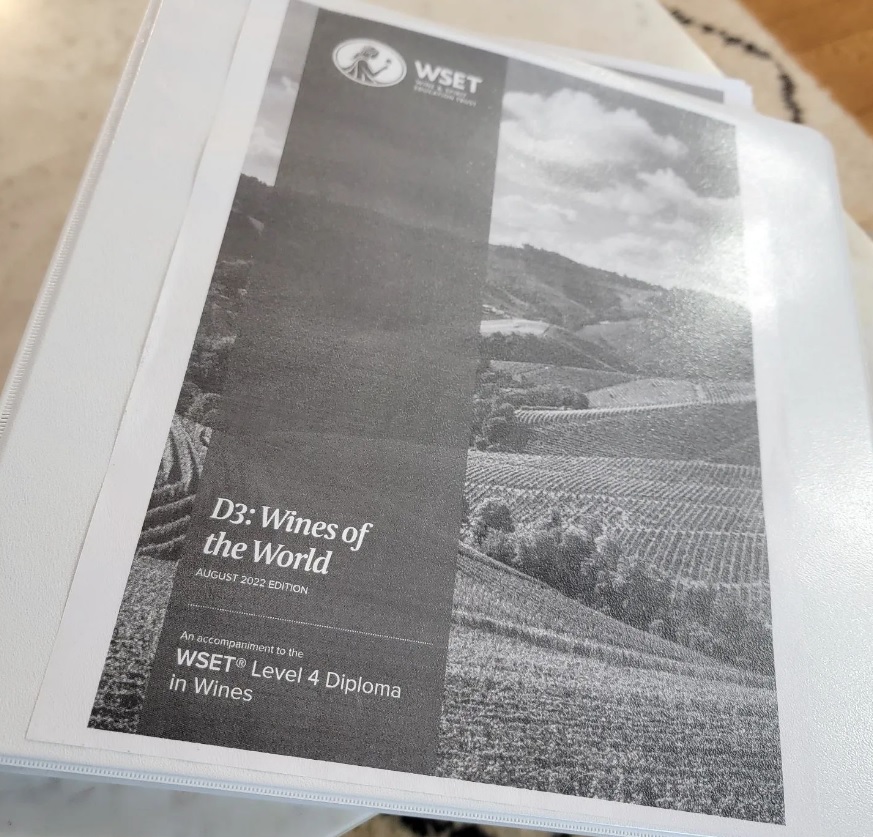
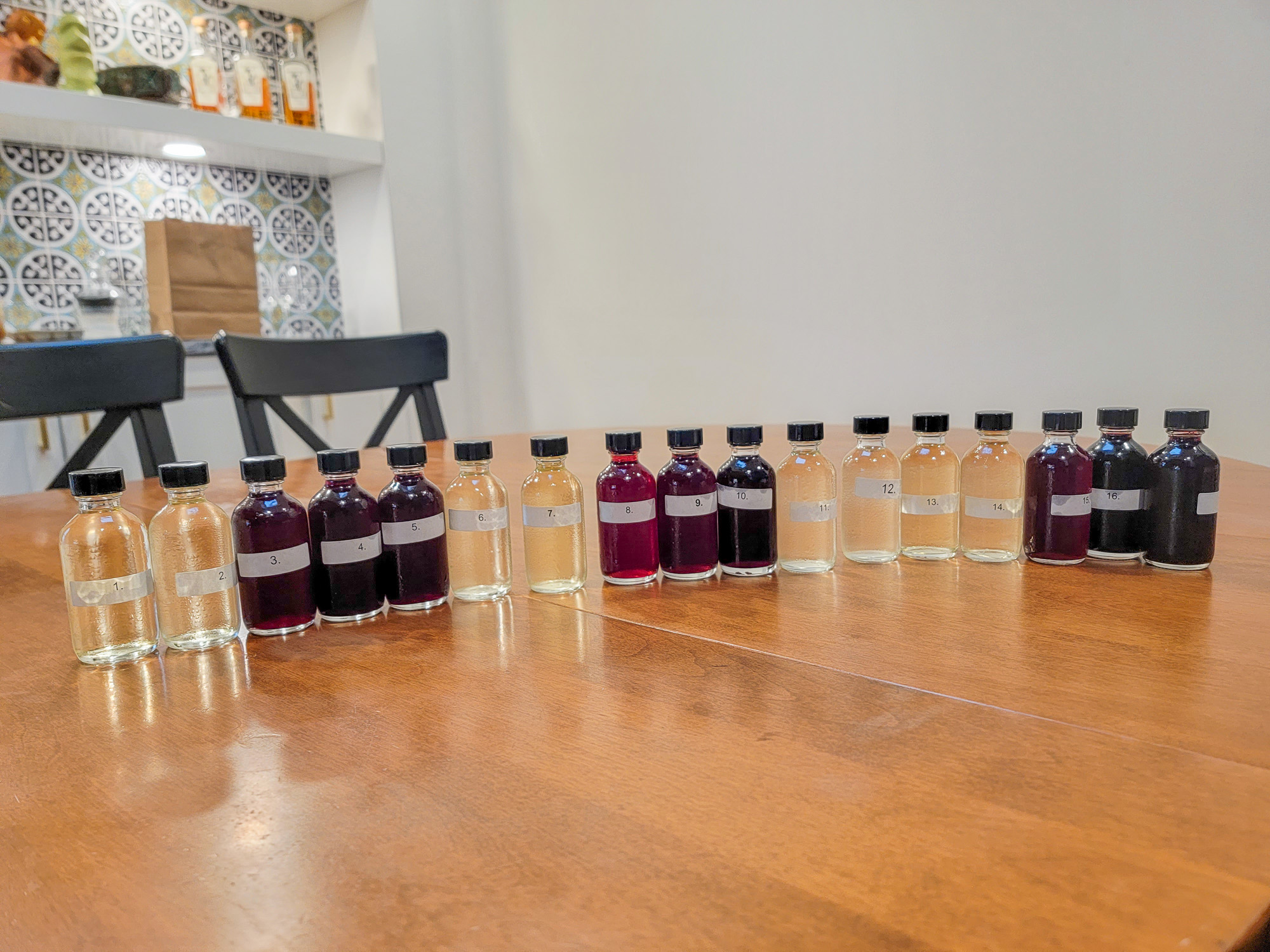
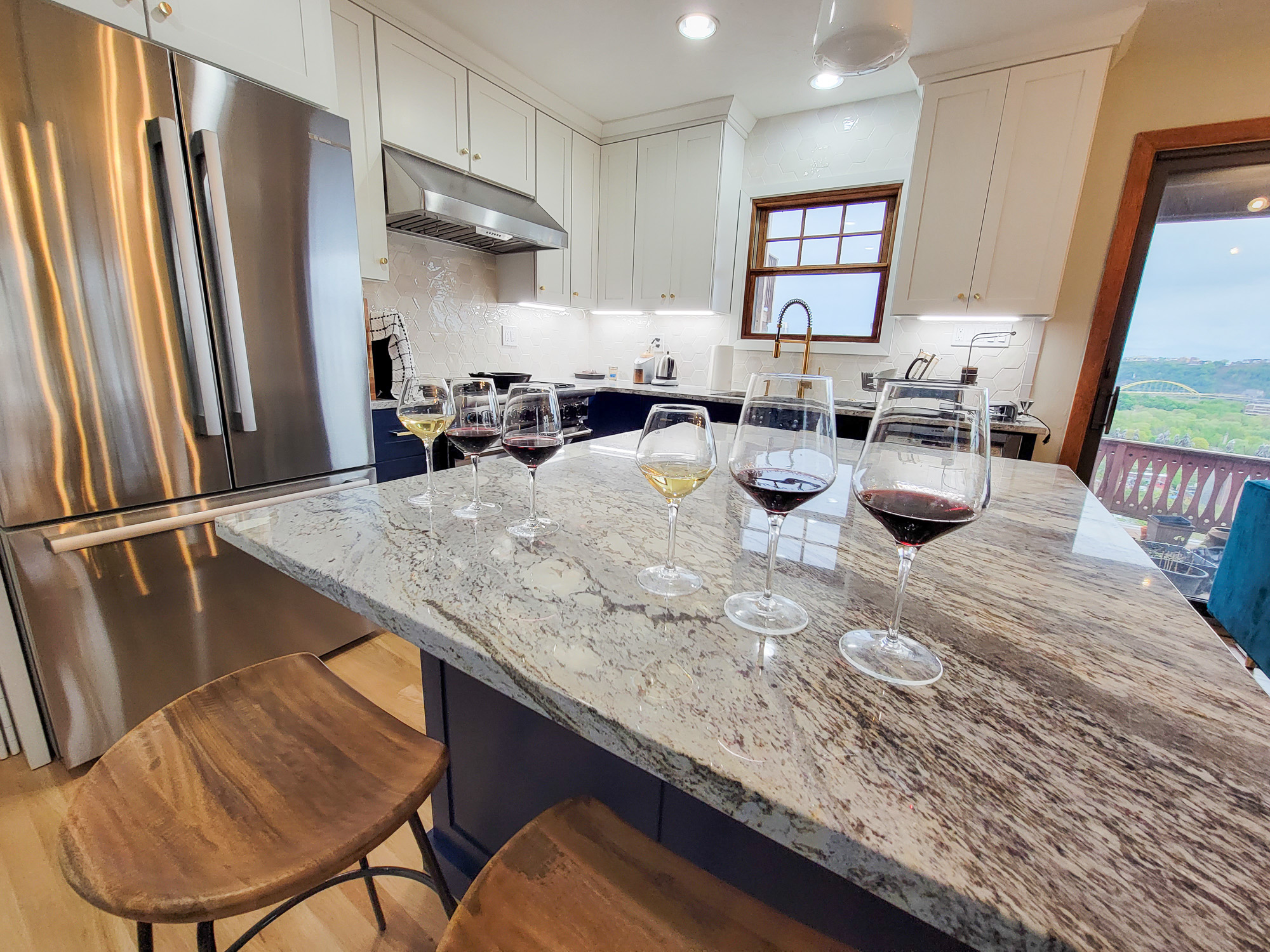
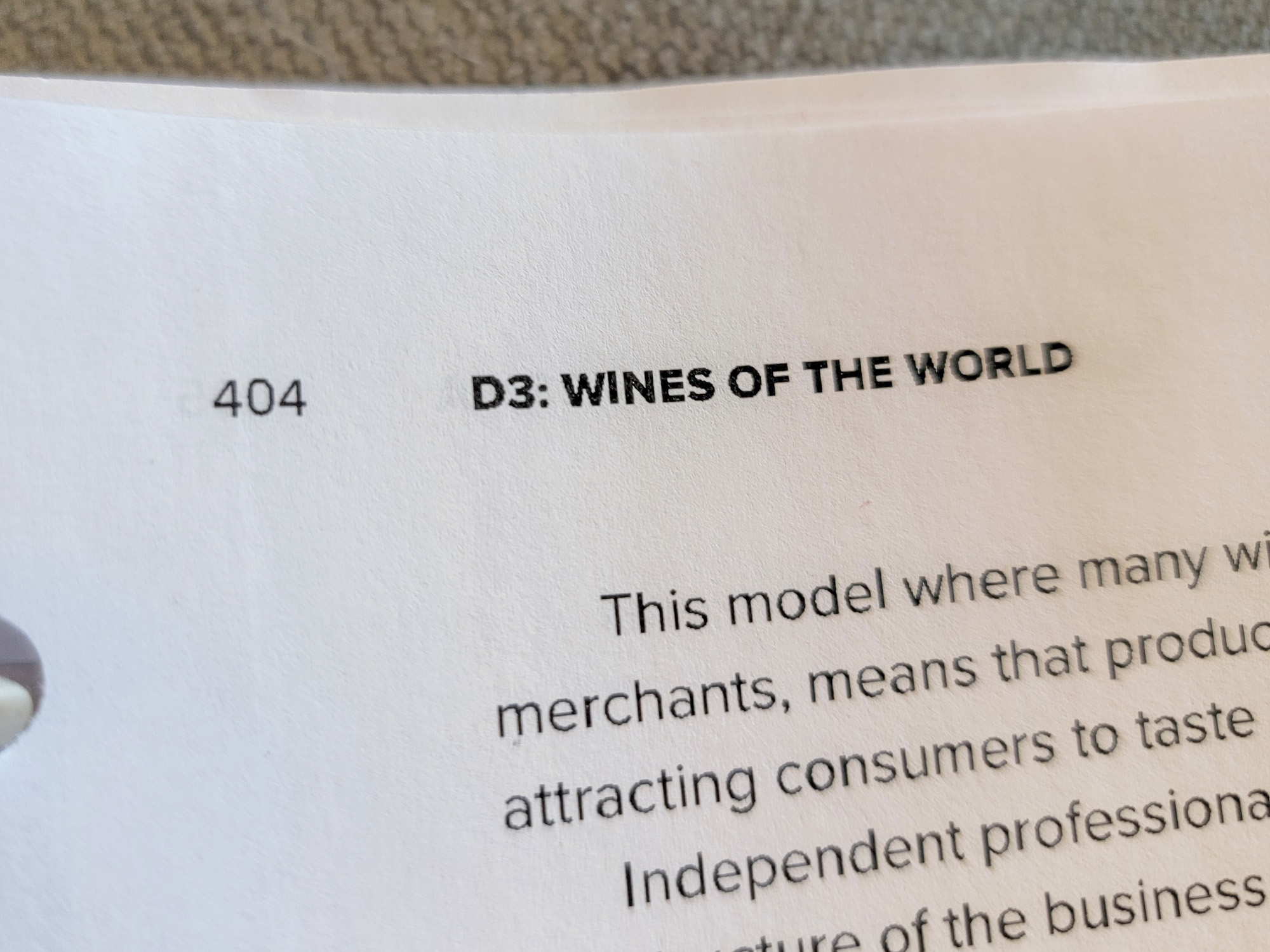
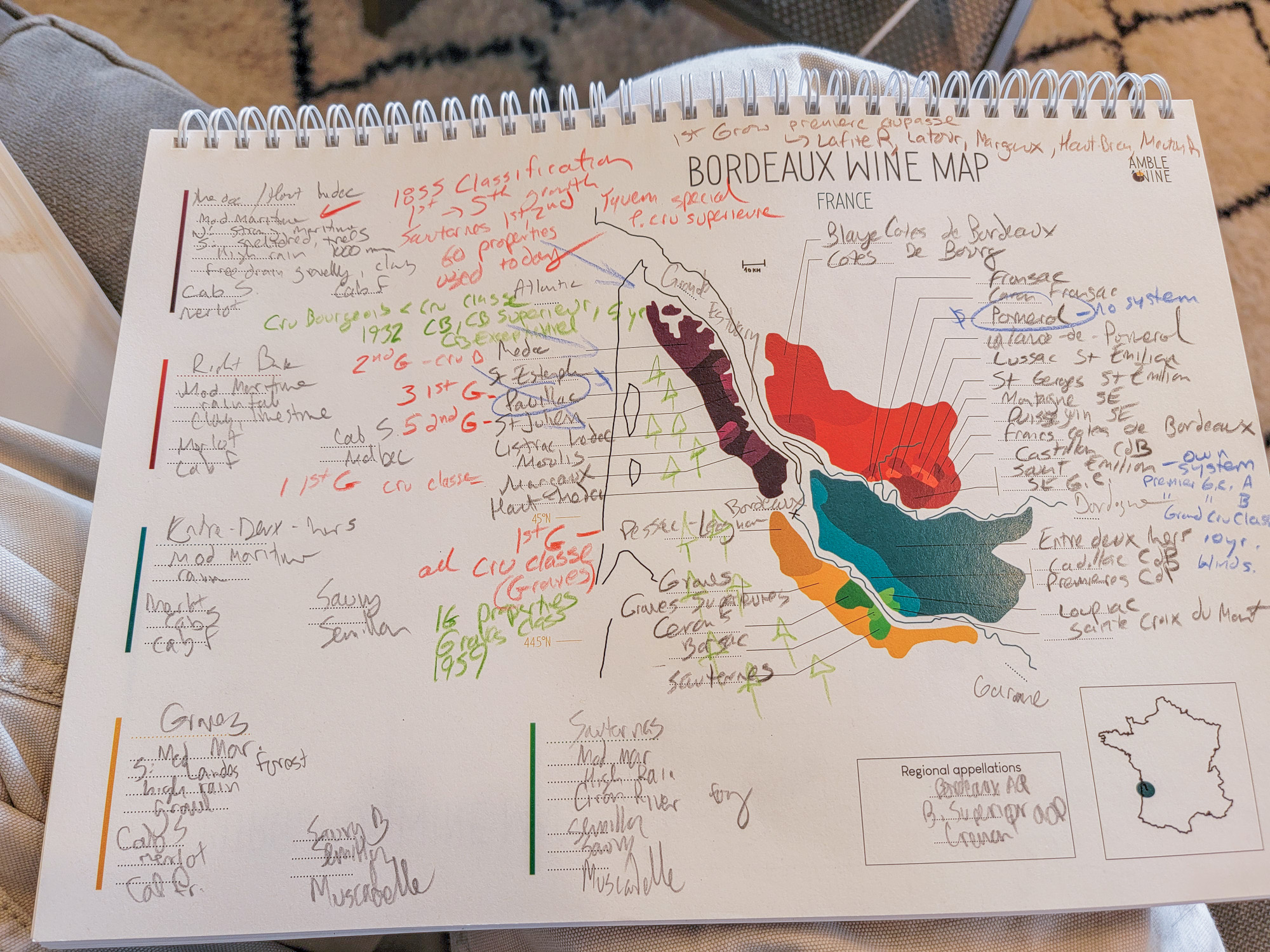
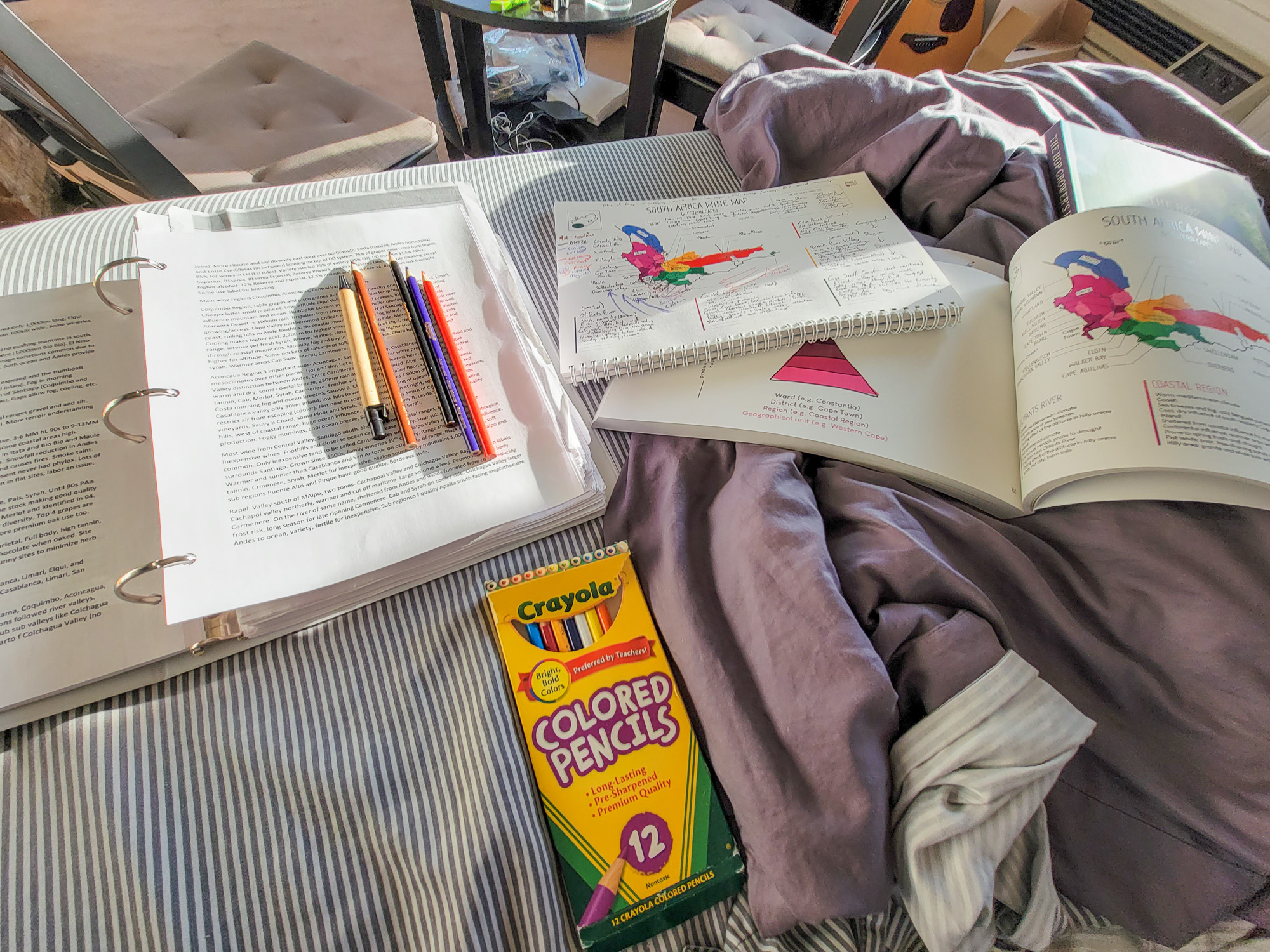
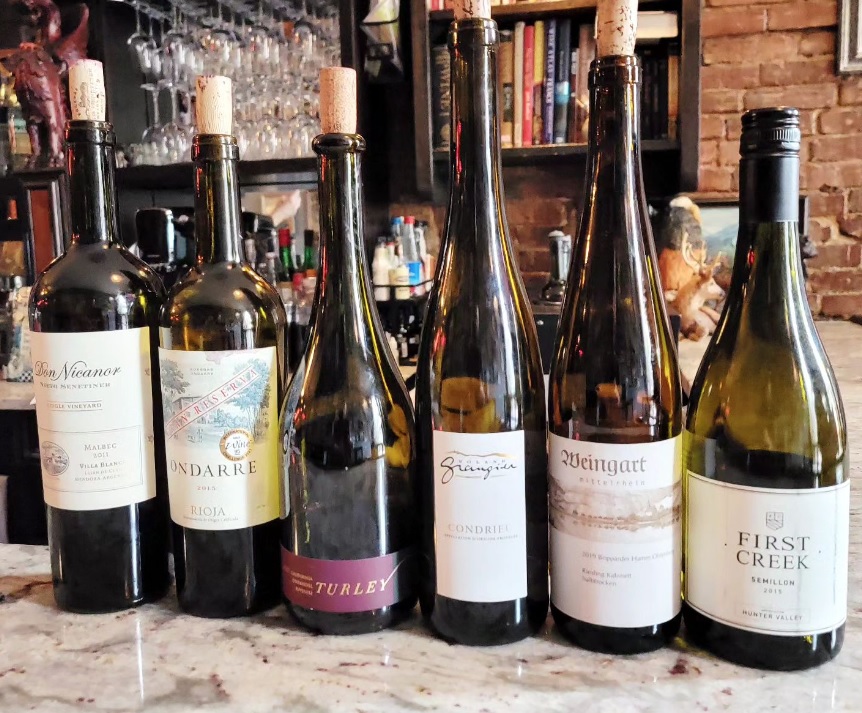
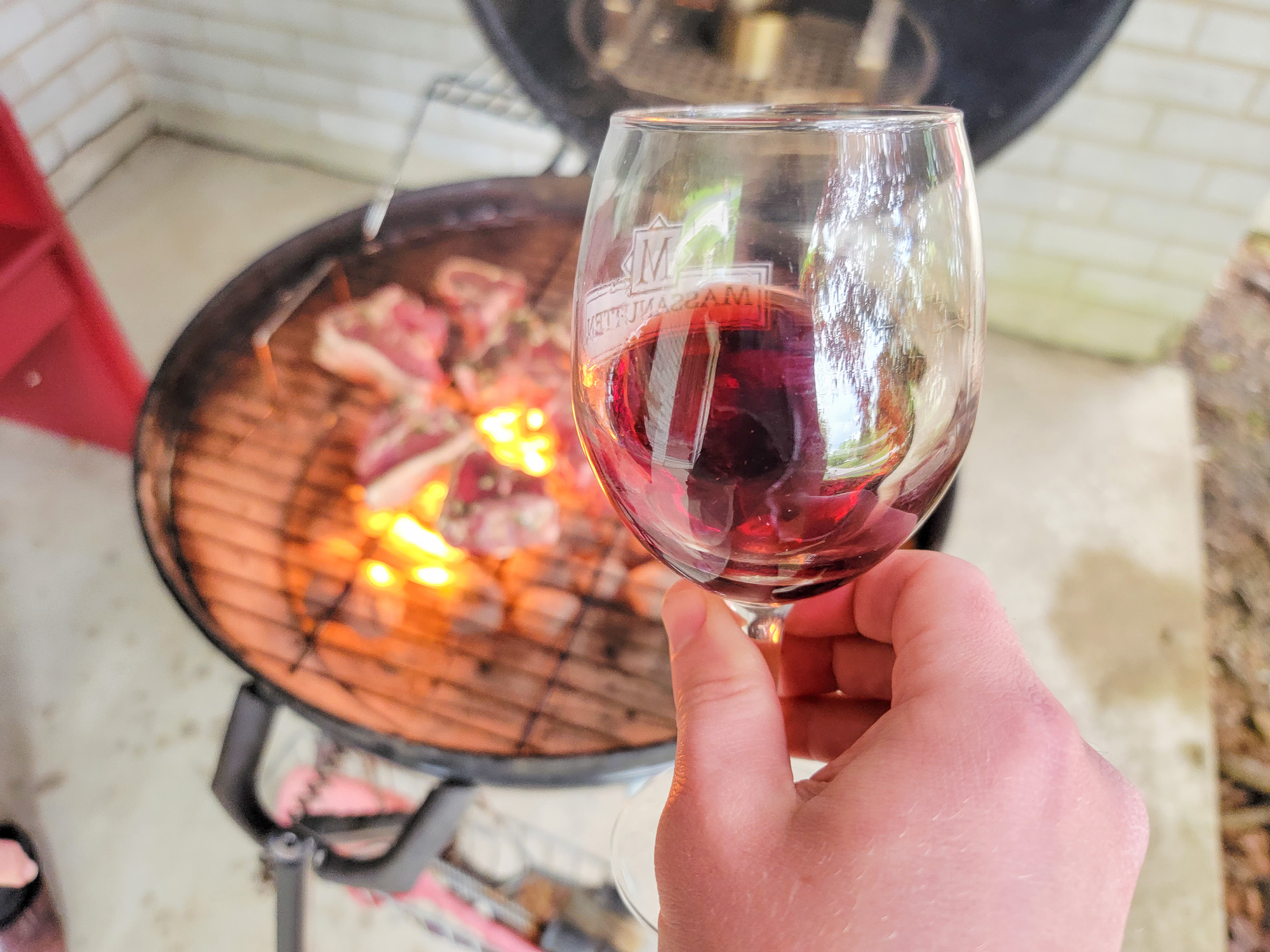

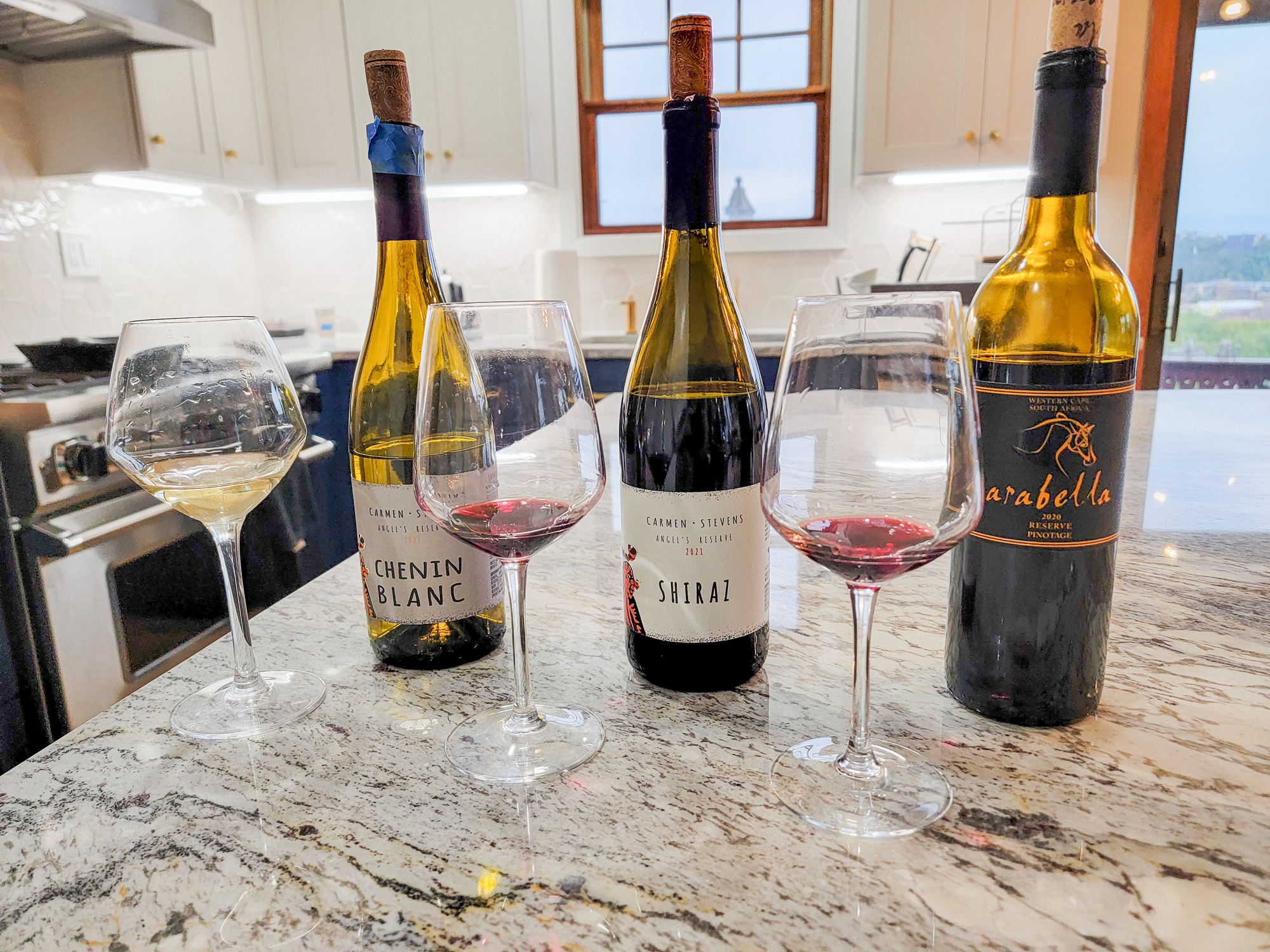
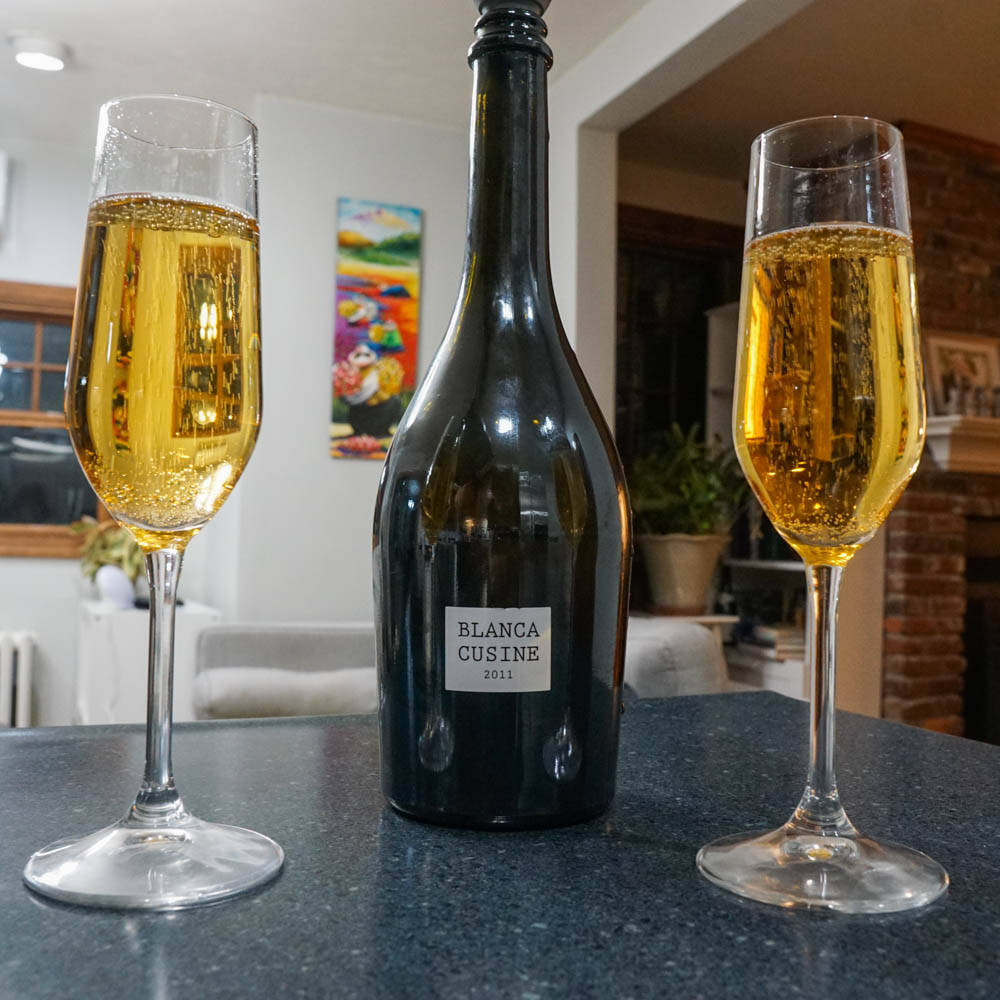
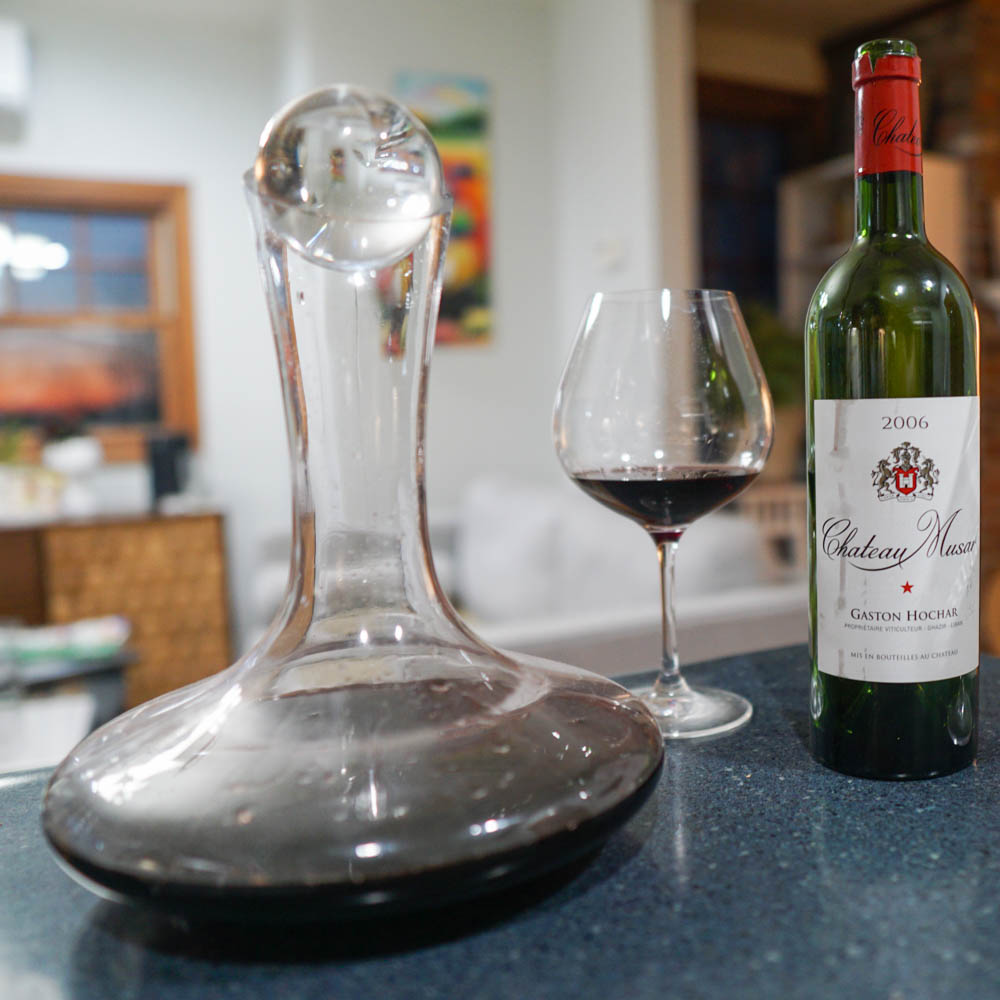
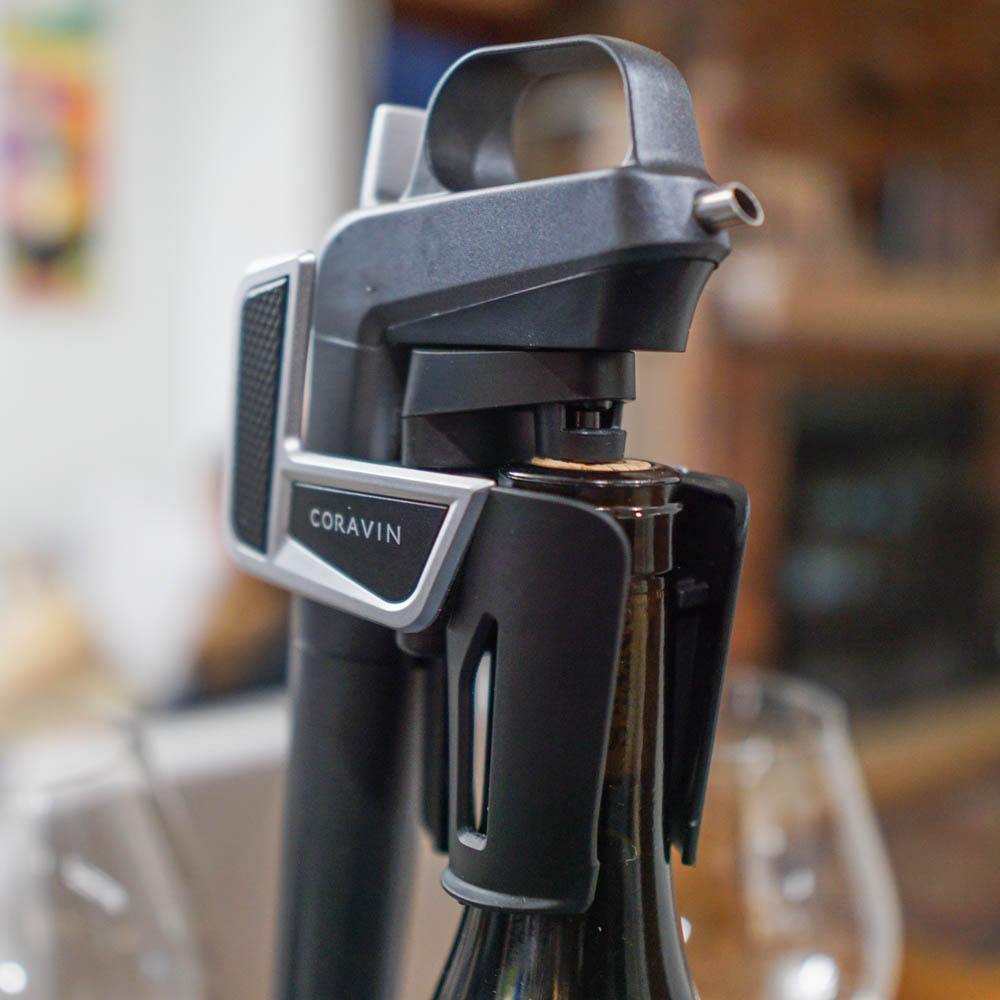
Hi! I had the D3 in May 2023 too. I agree on everything you wrote. I was good enough in the tasting, even if when I read the list of wine I fainted (I “guessed” 2 out of 12). And theory was just a joke of my mind: I was so sure I was not enough ready, that at the end I failed. But exams have also a lot to do with psychology. Now I will have the resit, but I am so happy about the good tasting result: it was really horrific! Thanks for sharing your impressions! Laura
So sorry to hear that you have to re-sit theory, but at least you don’t have to worry about tasting anymore! D3 is such a beast that I’m not sure anyone can truly be ready, so being prepared on just general D3 test logic and as many facts as you can arm yourself with is probably the best we can get to. I’m pretty sure that just one question difference probably would’ve made for a completely different experience for me too. But you are going to be much better prepared for the next sit now!